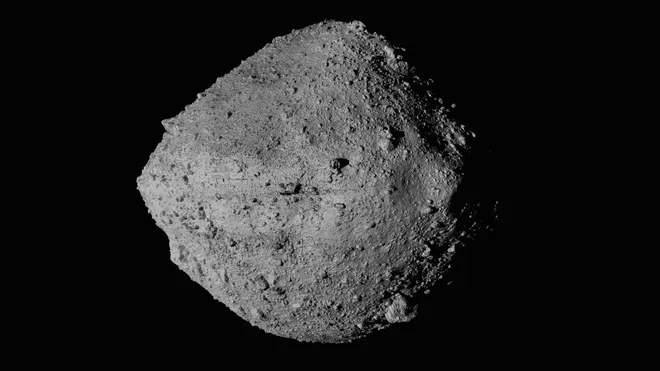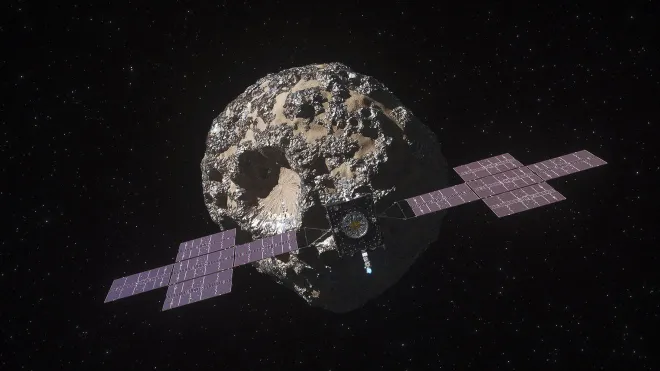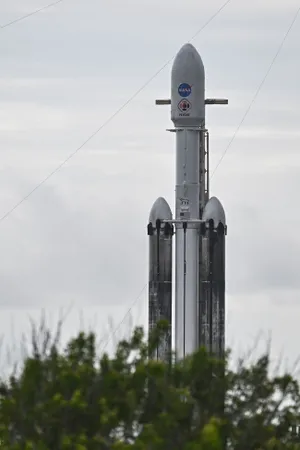Study: Asteroid known as Polyhymnia may contain 'superheavy' elements unknown to humans
Millions of asteroids are floating in space in the massive expanse between Mars and Jupiter, thousands of which are close enough to our planet to be deemed "near-Earth asteroids."
While the majority of these orbiting rocks don't attract any interest, some asteroids and their mysterious compositions have recently captivated astrophysicists. That includes scientists at NASA, who have lately been rushing to obtain asteroid samples from throughout the solar system.
Now a team at the University of Arizona in Tucson has made a mystifying and "exciting" discovery while analyzing an incredibly dense asteroid named 33 Polyhymnia. The asteroid — named after the Greek muse of sacred hymns — is so dense that researchers theorize that it may be made up of elements not contained on the periodic table.
The idea that some asteroids may be composed of materials unknown on Earth may be of interest to companies with plans for space mining on asteroids with precious metals such as gold, researchers said in a news release last week.
“The idea that some of these might be stable enough to be obtained from within our solar system is an exciting one," Johann Rafelski, a University of Arizona physics professor and co-author of a new Polyhymnia study, said in a statement.

From runways to rockets:Prada will help design NASA's spacesuits for mission to the moon
Polyhymnia made of elements denser that Osmium
In a study published in mid-September in The European Physical Journal Plus, researchers concluded that Polyhymnia has a measured density higher than those of any elements known to exist on Earth.
Classifying the asteroid as a compact ultradense object (CUDO,) the team realized that Polyhymnia may be composed of superheavy elements previously unknown to humans. In other words, it contains elements not on the periodic table at all.
These elements would be stable around atomic number 164, which is far denser that Osmium, the densest known naturally occurring stable element with 76 protons.
The University of Arizona team analyzed the properties of elements with atomic numbers higher than the highest atomic number in the periodic table, including not only Osmium, but other elements with higher atomic numbers that have been produced experimentally. However, the researchers could not find any with high enough mass densities to explain what has been observed on Polyhymnia.
"Our results on mass density allow us to hypothesize that if superheavy elements are sufficiently stable," the team said in the paper, "they could exist in the cores of dense asteroids like 33 Polyhymnia."
Bennu mission:Brian May, best known as Queen's guitarist, helped NASA return its 1st asteroid sample to Earth
NASA sends probes to distant asteroids

The team's findings come as NASA has ramped up efforts to send unmanned probes to the far reaches of outer space to study and even bring back samples from distant asteroids.
The space agency and the University of Arizona, with the help of Queen guitarist Brian May, recently recovered its first-ever asteroid sample delivered successfully late last month to Earth.
The 4.5-billion-year-old samples of black dust and rubble, which traveled 60 million miles from the asteroid Bennu, showed evidence of water and high carbon content, which could be "the building blocks of life on Earth," the University of Arizona researchers concluded.

More recently, NASA was able to finally launch its Psyche spacecraft last week for a long-anticipated journey to reach a metal-rich asteroid of the same name. The metallic asteroid Psyche bears striking similarities to Earth's own core, which led scientists to believe that studying it could yield valuable insights into how our planet formed.
Space debris:US issues first-ever space junk fine against Dish Network in 'breakthrough settlement'

Eric Lagatta covers breaking and trending news for USA TODAY. Reach him at elagatta@gannett.com
Disclaimer: The copyright of this article belongs to the original author. Reposting this article is solely for the purpose of information dissemination and does not constitute any investment advice. If there is any infringement, please contact us immediately. We will make corrections or deletions as necessary. Thank you.




